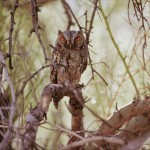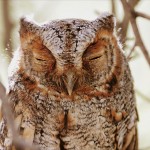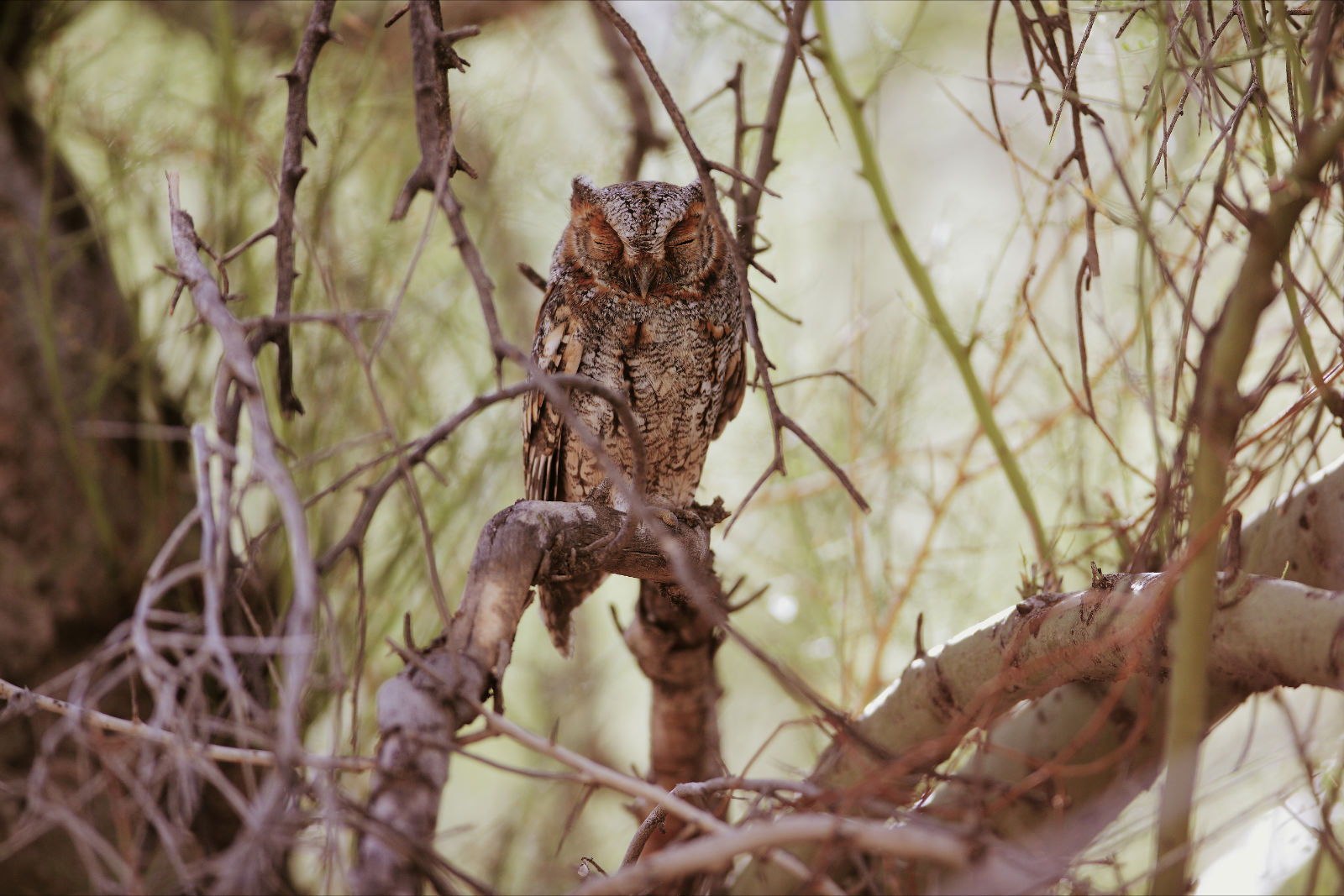The Flammulated Owl gets its name from two Latin words meaning “flame colored with ears.” The Flammulated Owl is the only small owl with dark eyes. This owl is only six inches in length. It hunts primarily insects and spiders. It lives in Ponderosa Pine forests with low shrub that allows for plentiful insect growth.  This bird lives west of the Rockies in local areas and is not widespread over its range. It makes its home in old Woodpecker holes in the trees. During the Winter it will fly south to Mexico for breeding. The only place in Arizona that this bird calls home is in the Southeast corner of the state.
This bird lives west of the Rockies in local areas and is not widespread over its range. It makes its home in old Woodpecker holes in the trees. During the Winter it will fly south to Mexico for breeding. The only place in Arizona that this bird calls home is in the Southeast corner of the state.
On October 14th I had stopped at a favorite resting spot to unload my pack and enjoy the morning air in a shady area. The sun was still behind Quartz Ridge when I arrived. I did not see that I had company. As the sun rose it revealed a silhouette. I was puzzled by a shape that looked animal and not plant. I couldn’t make out what it was and looked through the long lens for magnification. Boy! Was I surprised! It was an owl I had never seen before! After I got those first photos that are so necessary in wildlife photography I was able to settle down for more careful work. It was then that I saw the second owl on the right. This owl looked smaller and appeared lighter in color. For many owls that indicates a male. These owls were small. I held my hand up and made the letter ‘C’ with my thumb and index finger. The distance between my fingers is about the height of these birds from their feet on the perch to the top of their heads. I felt these two couldn’t be showing much more than four inches in height!
these birds from their feet on the perch to the top of their heads. I felt these two couldn’t be showing much more than four inches in height!
The photos are all taken from the position I spotted them. The birds are not visible from any other angle. Brush and branches will obscure them. The first few images are wide angles that progressively zoom in for a tighter look. Even backlit for easier spotting they are still difficult to see. It was only when I got home did I learn that they were probably a mating pair on their way to a honeymoon in Mexico. Many migrating birds stop in our city parks for a little R&R before continuing on their long journey. The fact they travel long distances at night is probably why these two birds would rather sit and sleep. Don’t push it and owls will be cooperative.

